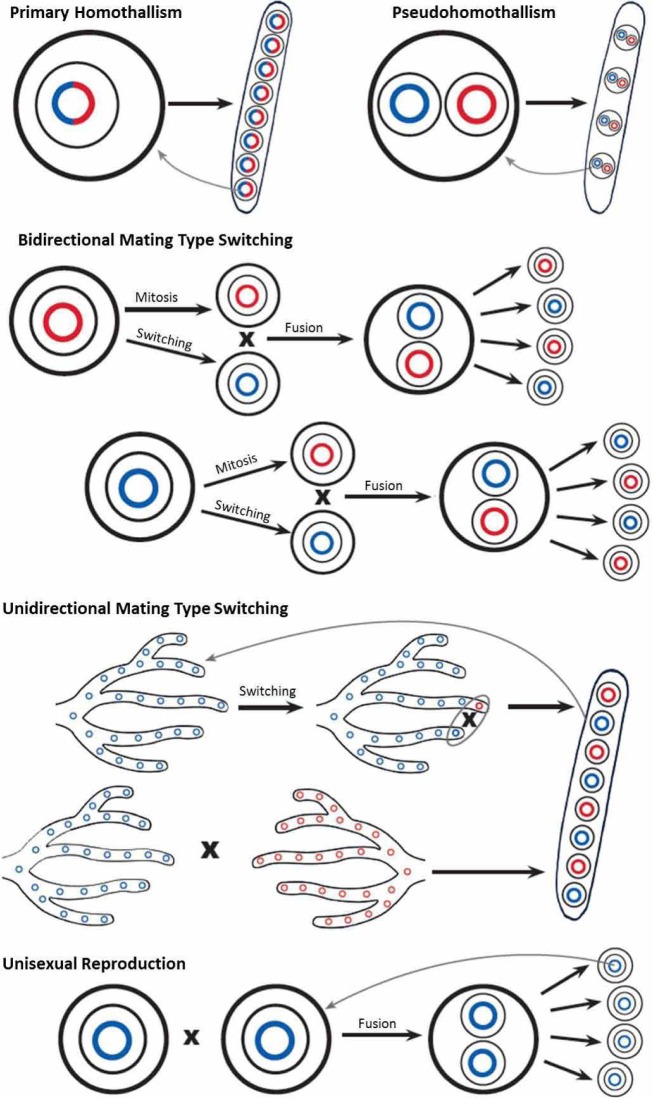Fig. 1.
A diagrammatic representation of the various genetic mechanisms of homothallism in fungi. Red and blue circles represent haploid genomes of opposite mating type, large black circles represent single fungal cells and small black circles within black ovals represent ascospores within asci. Primary homothallism: The presence of both MAT idiomorphs within a single genome allows the independent production of eight uninucleate ascospores identical to the parental cell as seen in Aspergillus nidulans. Pseudohomothallism: Self-fertility is the result of the packaging of two, opposite mating type nuclei within a single cell. Independent sexual reproduction results in the production of four binucleate ascospores as seen in Neurospora tetrasperma. Bidirectional mating type switching: Cells of either mating type undergo mitosis to form two identical cells, one of which is then able to switch to the opposite mating type. This leads to a mixed colony capable of sexual reproduction via functional heterothallism as seen in Saccharomyces cerevisiae. Unidirectional mating type switching: Cells of the hyphae of one mating type are able to switch mating type, producing a mixed mating type culture capable of sexual reproduction. The other mating type is unable to switch and thus requires the presence of a second individual to undergo sexual reproduction. This mating system is seen in Chromocrea spinulosa. Unisexual reproduction: Cells of the same mating type are able to interact and produce sexual spores regardless of the absence of an opposite mating type partner as in Cryptococcus neoformans.

